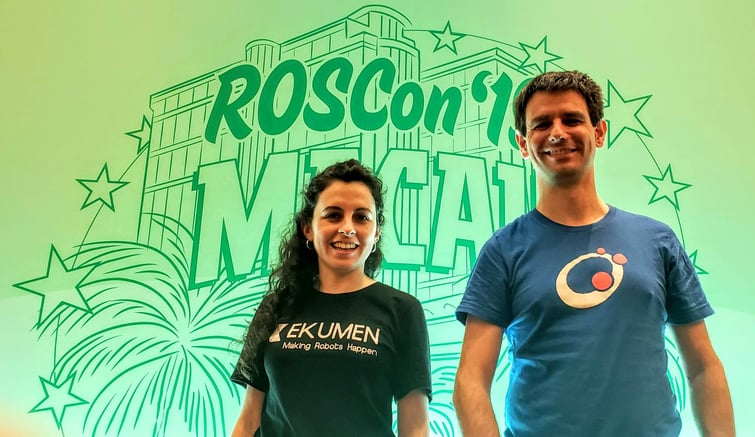ROScon 2019
Last week InOrbit was at ROScon, one of the most important technical conferences in robotics. It was great to see a growing and very engaged community tackle a wide variety of topics. Most of the energy in recent years has been around ROS2, and this year it was clear that it’s really happening. You could find robots on the exhibit floor running ROS2, and most of the talks tackled new capabilities in ROS2.
We noticed another, perhaps more significant change: there was a significant uptick in the number of talks and discussions regarding scalability of operations in the field and interoperability across robots. As ROS adoption is growing, attention is shifting towards managing hundreds or thousands of robots outside the lab.
The opening keynote set the tone. Selina Seah, Director of the Centre for Healthcare Assistive & Robotics Technology (CHART) at Changi General Hospital, and Morgan Quigley, Chief Architect at Open Robotics, presented their ongoing work to coordinate navigation of heterogeneous robotic fleets and more broadly addressing the need for interoperability of complex and disparate technological systems with HIT and infrastructure.
Our very own CTO/co-founder, Julian Cerruti, and one of the engineers on the InOrbit team, Florencia Grosso, presented some lessons learned working with robotics companies to deploy and operate fleets of ROS-based autonomous robots in production. Several other presentations mentioned fleet management, and the excellent panel on ROS at Scale delved into the details of how to handle large systems of robots in production settings.
 This trend is significant, as it proves that adoption of ROS-powered robots in the field is scaling. When you have 2 or 3 robots, nobody cares about fleet management. In the B2B world, once a company hits 50 they find that the tools and processes that they had been using are inadequate.
This trend is significant, as it proves that adoption of ROS-powered robots in the field is scaling. When you have 2 or 3 robots, nobody cares about fleet management. In the B2B world, once a company hits 50 they find that the tools and processes that they had been using are inadequate.
All this talk about scaling at ROScon confirms that we are on the right track. InOrbit is used by companies across industries to manage hundreds of robots in the field, with built-in support for heterogeneous fleets. In addition, it reinforces the mission of the Robot Operations Working Group, a cross-industry group where InOrbit is a steering committee member.
We are excited to contribute to the continuing evolution of ROS from research tool to production platform at scale.